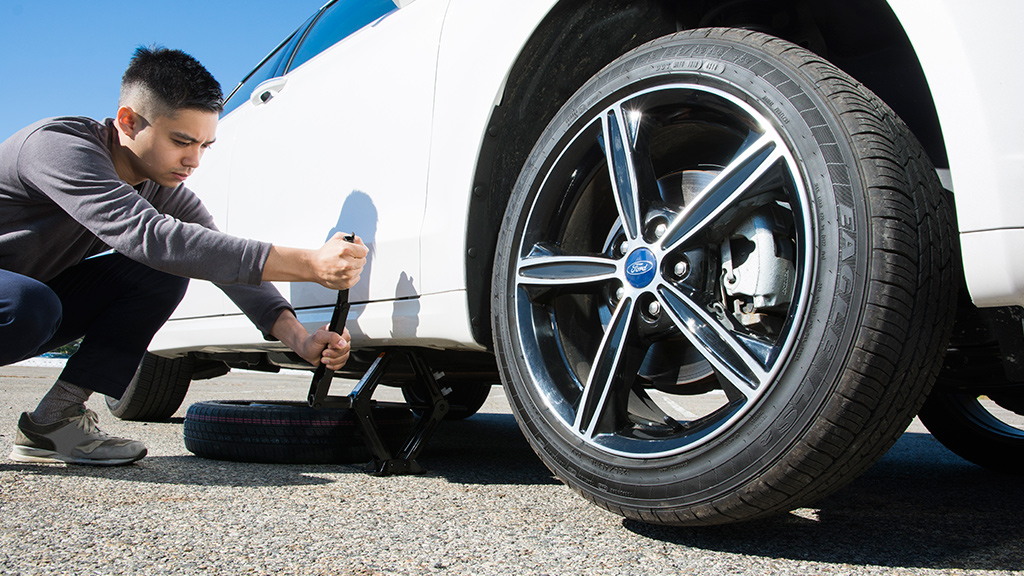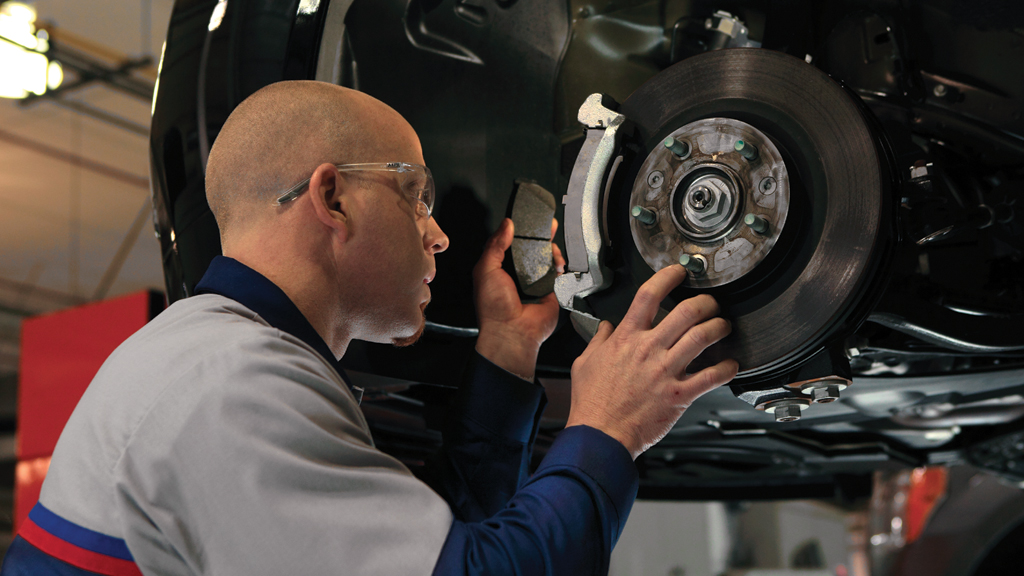Tips On How To Change A Flat Tire
We all know that gut wrenching pull of the steering wheel from a flat tire. Whether it was from a nail, pot hole or even a curb, you now have a flat tire and need to deal with it. Here are a few easy tips to help you change the tire and ways to prepare before it happens again.
BEFORE THE FLAT:
- Stash an emergency kit in your trunk or the glovebox. Changing a tire on the side of any road busy or not is a dangerous task, make sure your emergency kit includes things to keep you safe. such as flares, cones, a reflective vest or flashers to let other drivers know you are out of your car.
- Make sure to check if your car comes with a spare tire or a tire mobility kit. Most cars come with a smaller spare tire that is meant for driving short distances at slower speeds. The newer models may not come with a spare instead come with a tire mobility kit which allows you to re-inflate and patch your flat tire until you are able to get to your local Ford Service Center.
- Always maintain recommended tire pressure. Driving with low tire pressure is the leading cause of flat tires. Make sure to always check the pressure and fill them when necessary. You may get a warning signal on your dashboard that the tire pressure is low, make sure to never ignore this.
- Find out if you have Ford Roadside Assistance. *This service—which Ford owners can access by calling 800-241-3673—includes 24/7 flat-tire changes, as well as towing, battery jump start, fuel delivery and lock-out assistance. Depending on the age of your car, this coverage may be concurrent with your limited warranty coverage; call your dealer for more information. If your warranty coverage has run out, you may use your credit card to pay a one-time fee for the service you need.*
DURING THE FLAT:
- Pull over to a save area. Make sure to pull over as soon as possible to prevent further damage to your car. Also never attempt to change a tire on the interstate or on a busy road.

- Locate and remove the spare tire, jack and tool kit from your car. It is best to check your owners manual for specific location details, usually the spare tire is located in the cargo area or underneath the trunk.
- Loosen the lug nuts on the flat tire. It will make your life easier if you loosen the lug nuts while the car is still on the ground so the weight of the car will help get them off.

- Place the jack under the car frame. Your owners manual will be able to give you the best position where to place the jack.
- Raise the car until the jack is supporting the weight of the car.
- Make sure it is stable. Make sure the car is solid and wont fall off the jack by giving the car a little shake.
- Place the spare tire under the car for protection. It is a good idea to have the tire under the frame to protect you incase the car falls off the jack. Use the spare until you need to put it on then swap it out with the flat.
- Continue to raise car with jack. It needs to be high enough to allow you to get the fully inflated tire on.
- Remove all lug nuts and remove the tire from car. Keep all of the car parts away from under neath the car incase it falls off the jack.
- Put the spare tire on the car and add all the lug nuts. Tighten the lug nuts as tight as possible.

- Remove all tools form around and underneath the car.
- Place the flat tire and the rim under the frame for protection.
- Lower the car. With the tire off the ground tighten the lug nuts and lower the car.
- Put all tools away. This includes the flat tire and rim along with other tools you may have used.
- Drive safely and be alert. While driving on the spare be alert for any weird vibrations or sounds coming from your car. It may be a sign that further damage besides the tire has occurred.
AFTER A FLAT:
As soon as you can, take your car into your local Ford Service Center to have the tire replaced. While you are there get the rest of your tires checked to avoid another flat as long as possible.
*Credit myfordmag.com.




